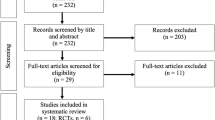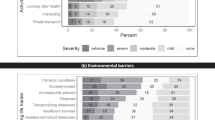Abstract
Objectives
To explore experiences of fatigue among people with spinal cord injuries (SCIs) and factors perceived to contribute to fatigue.
Setting
Kelowna, Prince George, Vancouver and Victoria, British Columbia, Canada.
Study design
Collaborative, qualitative methodology.
Methods
Four focus groups were undertaken simultaneously with a total of 29 participants, comprising a purposive sample of men and women: 21 people with complete and incomplete SCI of high and low tetraplegia and paraplegia, 2 family members, 2 assistants and 4 occupational therapists. Interpretive analysis was grounded in the themes identified in the data.
Results
Fatigue was perceived to have cognitive, emotional and physical dimensions and to exert a profound effect on the lives of many people with SCI, such that pleasurable activities were often eschewed to enable the accomplishment of more mundane tasks. Factors most consistently associated with fatigue were pain, depression and hopelessness, side effects of medications, poor quality sleep, spasticity, poor posture, diet, and the effort required to accomplish routine and self-care tasks.
Conclusions
Fatigue is a complex phenomenon, interlinked with pain, depression and hopelessness that significantly diminishes the quality of life following SCI. Further research is required to provide greater understanding of this issue and to determine appropriate and comprehensive forms of intervention.
Similar content being viewed by others
Log in or create a free account to read this content
Gain free access to this article, as well as selected content from this journal and more on nature.com
or
References
Charlifue SW, Gerhart KA, Whiteneck GG . Conceptualizing and quantifying functional change: an examination of aging with spinal cord injury. Top Geriatr Rehabil 1998; 13: 35–48.
Thompson L . Functional changes in persons aging with spinal cord injury. Assist Technol 1999; 11: 123–129.
Prysak GM, Andresen EM, Meyers AR . Prevalence of secondary conditions in veterans with spinal cord injury and their interference with life activities. Top Spinal Cord Inj Rehabil 2000; 6: 34–42.
Jensen MP, Kuehn CM, Amtmann D, Cardenas DD . Symptom burden in persons with spinal cord injury. Arch Phys Med Rehabil 2007; 88: 638–645.
Barat M, Dehail P, de Souze M . Fatigue after spinal cord injury. Ann Readapt Med Phys 2006; 49: 365–369.
Gerhart KA, Charlifue SW, Weitzenkamp DA . Mild and incomplete spinal cord injuries: a walk in the park? SCI Life 2000; Winter: 24–25.
Fawkes-Kirby TM, Wheeler MA, Anton HA, Miller WC, Townson AF, Weeks CAO . Clinical correlates of fatigue in spinal cord injury. Spinal Cord 2008; 46: 21–25.
Pentland W, Walker J, Tremblay M, Brouwer B, Gould M . Women with spinal cord injury and the impact of aging. Spinal Cord 2002; 40: 374–387.
McColl MA, Arnold R, Charlifue S, Glass C, Savic G, Frankel H . Aging, spinal cord injury, and quality of life: Structural relationships. Arch Phys Med Rehabil 2003; 84: 1137–1144.
Thompson L, Yakura J . Aging related functional changes in persons with spinal cord injury. Top Spinal Cord Inj Rehabil 2001; 6: 69–82.
White GW . Consumer participation in disability research: the golden rule as a guide for ethical practice. Rehabil Psychol 2002; 47: 438–446.
Kitzinger J . Focus groups with users and providers of health care. In: Pope C, Mays N (eds). Qualitative Research In Health Care, 2nd edn. BMJ: London, 2000, pp 20–29.
Packer TL, Brink N, Sauriol A . Managing Fatigue: A Six-Week Course for Energy Conservation. Therapy Skill Builders: Tucson, AZ, USA, 1995.
Krupp L, LaRocca N, Muir-Nash J, Steinberg AD . The Fatigue Severity Scale: application to patients with multiple sclerosis and systemic lupus erythematosus. Arch Neurol 1989; 46: 1121–1123.
Anton HA, Miller WC, Townson AF . Measuring fatigue in persons with spinal cord injury. Arch Phys Med Rehabil 2008; 89: 538–542.
Packer TL, Sauriol A, Brower B . Fatigue secondary to chronic illness: postpolio syndrome, chronic fatigue syndrome, and multiple sclerosis. Arch Phys Med Rehabil 1994; 75: 1122–1126.
Williams C . Overcoming Depression and Low Mood. A Five Areas Approach. 2nd edn. Hodder Arnold: London, 2006.
Kemp BJ, Adkins RH, Thompson L . Aging with a spinal cord injury: what recent research shows. Top Spinal Cord Inj Rehabil 2004; 10: 175–197.
Roth EJ . Pain in spinal cord injury. In: Yarkony GM (ed). Spinal Cord Injury: Medical Management and Rehabilitation. Aspen: Gaithersburg, MD, USA, 1994, pp 141–158.
Henwood P, Ellis JA . Chronic neuropathic pain in spinal cord injury: the patient's perspective. Pain Res Manage 2004; 9: 39–45.
Hammell KW . Exploring quality of life following high spinal cord injury: a review and critique. Spinal Cord 2004; 42: 491–502.
Britell CW, Umlauf R, Loehr JT, deLisa JA . Survey of health issues in spinal cord injured out-patients: a case for specialised, multifaceted ongoing care. Arch Phys Med Rehabil 1986; 67: 654.
Ehde DM, Jensen MP, Engel J, Turner JA, Hoffman AJ, Cardenas DD . Chronic pain secondary to disability: a review. Clin J Pain 2003; 19: 3–17.
Gerhart KA, Bergstrom E, Charlifue SW, Menter RR, Whiteneck GG . Long-term spinal cord injury: functional changes over time. Arch Phys Med Rehabil 1993; 74: 1030–1034.
Widerstrom-Noga EG, Felipe-Cuervo E, Yezierski RP . Chronic pain after spinal cord injury: interference with sleep and daily activities. Arch Phys Med Rehabil 2001; 82: 1571–1577.
Acknowledgements
We thank the study participants for their time and input, as well as the following people who made valuable contributions to research planning and data collection: Dr Andrea Townsend, Tracy Henderson, Dr Joanna Mereu and Cordelle Neufeld. We also wish to acknowledge the Canadian Institutes of Health Research Institute of Aging who provided a New Investigator salary award for Dr Miller. This research was funded by a Michael Smith Foundation for Health Research, Disability Health Research Network grant.
Author information
Authors and Affiliations
Corresponding author
Rights and permissions
About this article
Cite this article
Hammell, K., Miller, W., Forwell, S. et al. Fatigue and spinal cord injury: a qualitative analysis. Spinal Cord 47, 44–49 (2009). https://doi.org/10.1038/sc.2008.68
Received:
Revised:
Accepted:
Published:
Issue date:
DOI: https://doi.org/10.1038/sc.2008.68
Keywords
This article is cited by
-
Limb accelerations during sleep are related to measures of strength, sensation, and spasticity among individuals with spinal cord injury
Journal of NeuroEngineering and Rehabilitation (2022)
-
A perspective on adverse health outcomes after breast cancer treatment in women with spinal cord injury
Spinal Cord (2021)
-
The association between secondary health conditions and indirect costs after spinal cord injury
Spinal Cord (2021)
-
Lifestyle modifications and pharmacological approaches to improve sexual function and satisfaction in men with spinal cord injury: a narrative review
Spinal Cord (2020)
-
Employment status, hours working, and gainful earnings after spinal cord injury: relationship with pain, prescription medications for pain, and nonprescription opioid use
Spinal Cord (2020)



